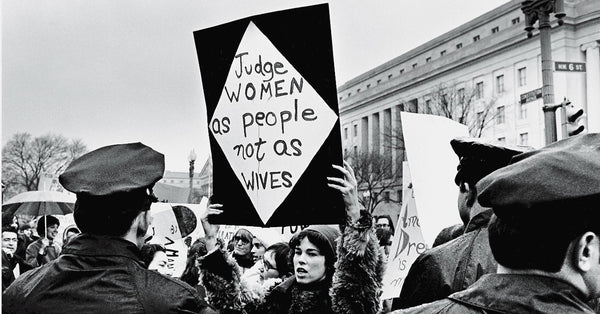A Look Back at The History Of International Women's Day

International Women’s Day is celebrated on 8 March every year. It’s been widely recognized over the last few years but has a longer history than you might imagine.
Who started International Women’s Day?
It began as a socialist idea and then later became mainstream.
As far as we know, the first official day in honor of women was a national celebration held in New York in February 1909. It was the brainchild of Theresa Malkiel, head of the Woman’s National Committee of the Socialist Party of America.
In 1910, German socialists and feminists Luise Zietz and Clara Zetkin proposed an international day for women at the International Women’s Conference in Denmark. As a result, on March 19 the following year, more than a million people across Europe held demonstrations in support of women’s rights.
In 1914, March 8 was officially established as International Women’s Day and it became a day for women to both celebrate their achievements and protest their oppression. (That year, British suffragette Sylvia Pankhurst was arrested on her way to give a speech.)
On March 8, 1917, female textile workers in Petrograd, Russia (now St Petersburg) went on strike in protest at their autocratic government, food shortages and the continuation of the first world war. A week later, Russian emperor Nicholas II abdicated and women won the right to vote. International Women’s Day became a national holiday in Russia, and was embraced by leaders in other countries, including China and Spain.
It gained momentum worldwide in the decades that followed, and The United Nations recognized it in 1975, which they designated International Women’s Year. In 1977, the UN General Assembly encouraged member states to recognize International Women’s Day on March 8 every year.
What is International Women’s Day for?
Some of the original goals were for women everywhere to have fair working conditions and the right to vote. That’s now expanded to wanting women and girls to be treated equally throughout society. While one day obviously can’t overturn centuries of injustice, it can highlight both the problems women still face and the people working to overcome them.
Do we still need International Women’s Day?
We’ve made a lot of progress since 1909. In 1945, The Charter of the United Nations established that men and women were equal.
In 1995, 189 governments signed The Beijing Declaration and Platform for Action, committing to a future where women are free to be educated, financially independent, and free from discrimination and gender-based violence. In 2012, a United Nations resolution outlawed Female Genital Mutilation.
Women have been elected head of state in Britain, Australia, New Zealand, Sri Lanka, Israel, Norway, Liberia, Argentina, and many other countries around the world. The U.S had its first female presidential candidate of a major party in 2016 and now has three women on the Supreme Court and a record number of women in congress (104 members of the House and 21 senators).
The Civil Rights Act of 1964 outlawed discrimination on the grounds of sex and other protected categories and in the last few months, the #metoo and Time’s Up campaigns have elevated women’s voices on the topics of sexual harassment and assault, and in some cases, led to legal action.
But there’s still more to be done: in the U.S, an estimated 237,868 people are sexually assaulted each year, most of them women and girls. Thirty percent of women worldwide have experienced domestic violence, and the most recent Global Gender Gap Report from the World Economic Forum estimated that gender parity is more than 200 years away.
What is the theme this year?
Each year, the UN designates a theme for International Women’s Day. In the past this has included Women Uniting for Peace, Women and HIV/AIDS and Investing in Women and Girls. This year, the theme is “Time is Now: Rural and urban activists transforming women’s lives” The idea is to acknowledge that we won’t be equal until the needs of women in deprived environments and are recognized and addressed – and also to celebrate the activists working on behalf of women in both urban and rural areas. You can use the hashtag #TimeisNow on social media to find out more.
The International Women’s Day website, on the other hand, is promoting a different but allied concept, Press for Progress, which emphasizes that we still need to keep pushing for global women’s rights.
But… (there’s always someone who asks) what about the men?
International Men’s Day has been held on 19 November since 1992.
0 comments